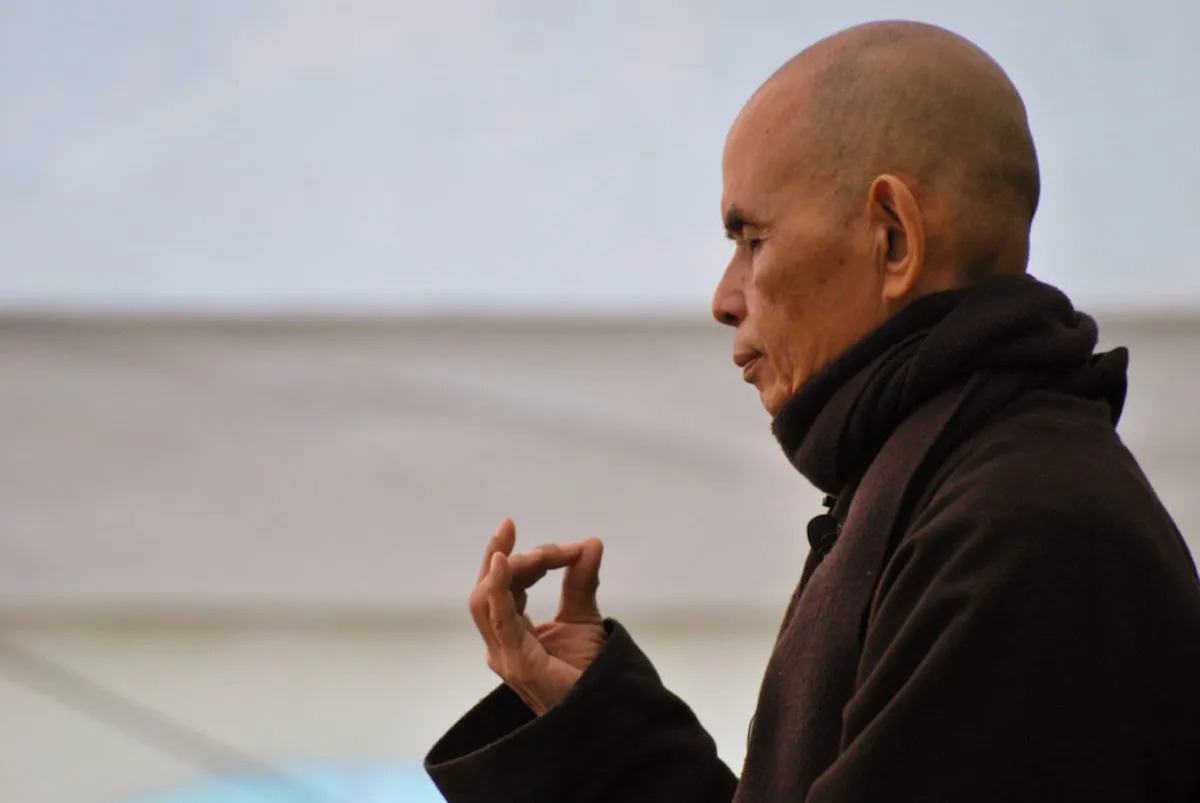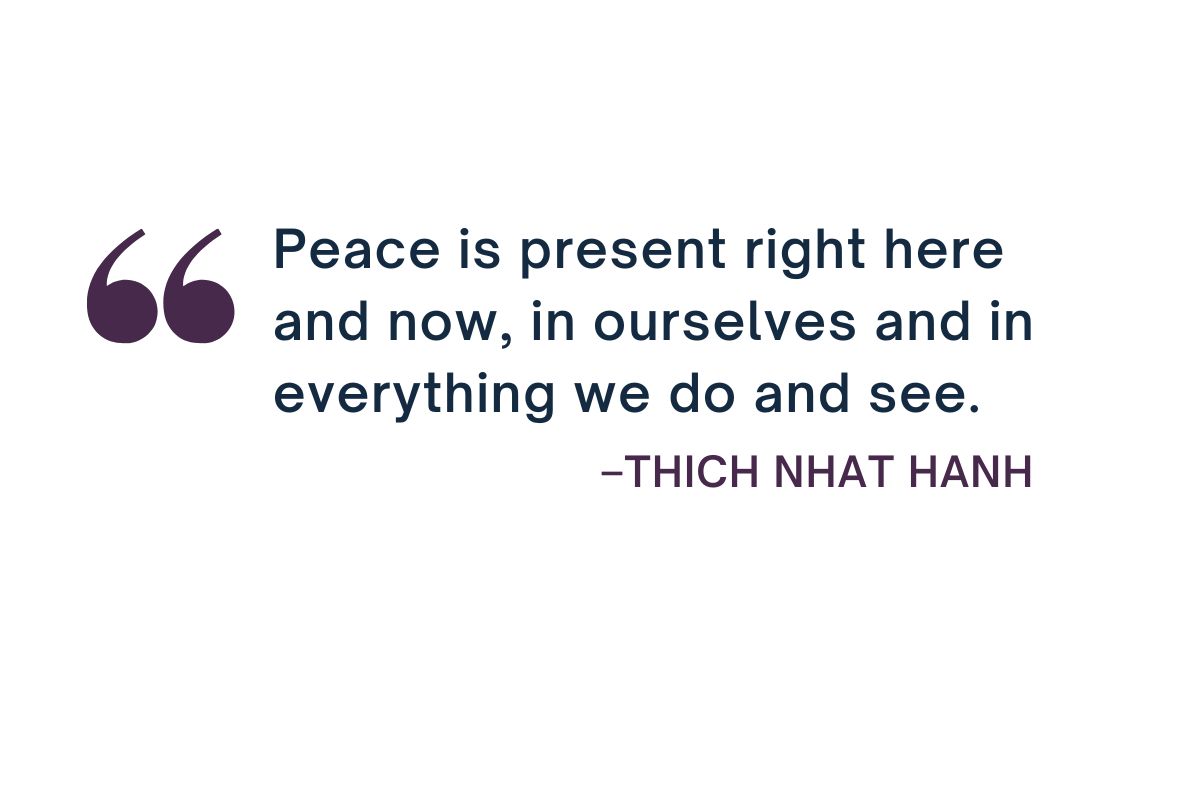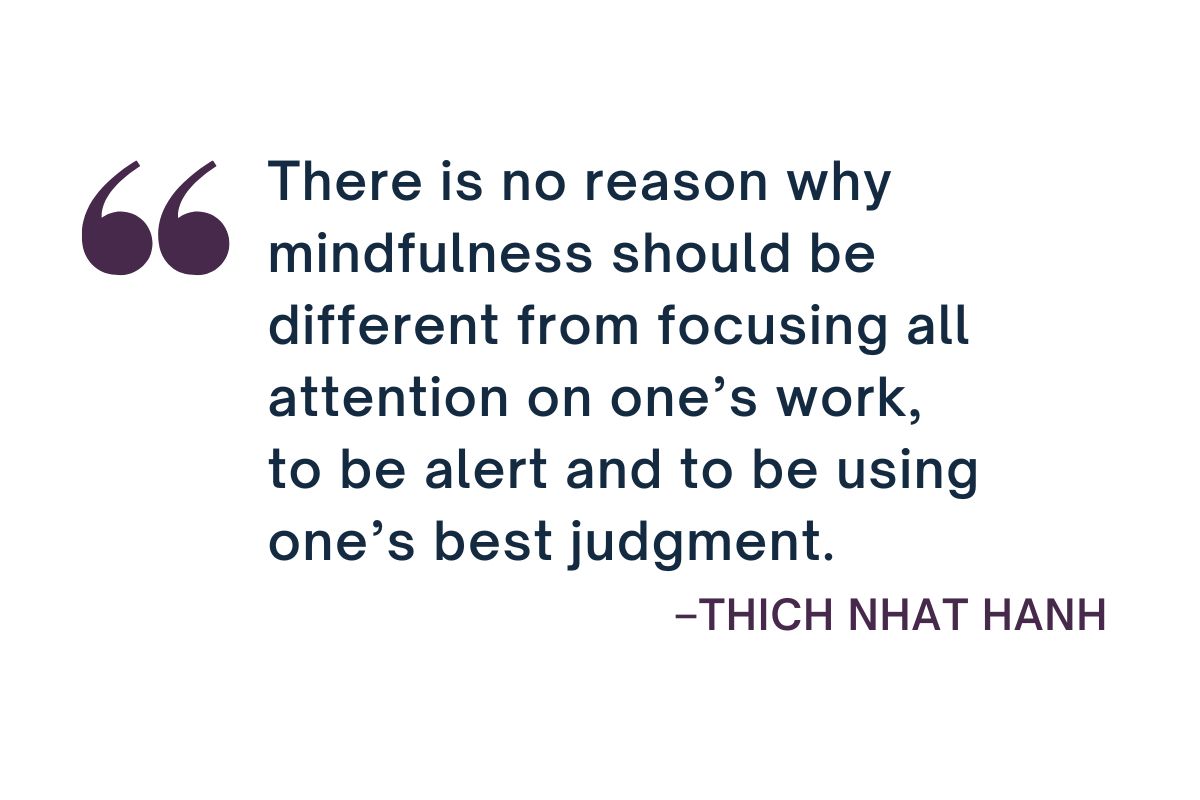“Every twenty-four-hour day is a tremendous gift to us,” writes Thich Nhat Hanh (October 11, 1926-January 22, 2022) in the opening chapter of his book You Are Here: Discovering the Magic of the Present Moment. “Breathe in and tell yourself that a new day has been offered to you, and you have to be here to live it.”
The art of living in the present moment, as Thich Nhat Hanh explains, lies in the ability to master the art of mindful breathing. We need to light up the lamp of our awareness to illuminate the breath and everything happening around us in the present moment.
Observing our breath can be challenging because we might try to control it or influence it in some way. This is a mistake, warns Thich Nhat Hanh, as Buddhist practice is based on nonviolence. We don’t have to struggle with our breath, body, or difficult emotions. Thich Nhat Hanh writes:

FREE Self-Test: How Spiritual Are You?
Do not intervene or force either your in-breath or our out-breath. It’s like looking at a flower: letting it be as it is, mindful of the fact that it is there, a kind of miracle. See the flower as it is. See the breath as it is. We let the flower be as it is, and we should not do violence to our breath either. …
Whatever happens in the mind affects the body, and vice versa. If you generate peacefulness in your breathing, that peacefulness permeates your body and your state of mind. If you have practiced meditation, you have already discovered this. If you have been able to embrace your in-breath and your out-breath with tenderness, you know that they in turn embrace your body and your mind.

The first miracle of mindfulness, Thich Nhat Hanh explains, is that you are here, in your own presence. Some people don’t truly live; they walk around like corpses, consumed by their past, afraid of the future, and trapped in jealousy and anger. We must look at them with mindfulness and cultivate compassion because they do not realize that life is accessible only in the here and now. He writes:
You have the ability to wake up. You have the ability to be compassionate. You just need a little bit of practice to be able to touch the best that is in you. Enlightenment, mindfulness, understanding, and compassion are in you. Very simple practices — such as meditative walking, mindful breathing, or washing dishes mindfully — make it possible for you to leave hell and touch the positive seeds that are within you.

The second miracle of mindfulness, Thich Nhat Hanh continues, lies in the presence of the other. The other can be your family member, your spouse, or your friend. Loving is recognizing the presence of the other, and it’s not a theory — it’s an everyday practice. He writes:
When the other person realizes that his or her presence has been recognized and confirmed, he or she will blossom like a flower. To be loved is to be recognized as existing. Have you looked at others in this way? If you embrace them with the energy of mindfulness, with your true presence, this energy is completely nourishing. It is like water for a flower. A flower needs water to live, and the person you love needs your presence! Your presence is the most precious gift you can give him or her.

The third miracle of mindfulness, Thich Nhat Hanh concludes, lies in maintaining your own presence, mindfulness of the other, and working with positive and negative elements around you. You have to hold onto the things that are refreshing and embrace any negative elements with your mindful attention. He writes:
Perhaps you are in contact with too many negative elements. You have looked at, listened to, and touched things that are negative in nature, such as fear and despair. These negative forces are everywhere. When you turn on the television, for instance, you run the risk of ingesting harmful things, such as violence, despair, or fear.
At that moment, say to yourself with mindfulness, “I don’t need these things. I already have suffering, violence, anger, and despair in me. I refuse to watch these programs. I am going to seek out things that are refreshing in nature, healing and helpful things. I will practice walking meditation; I will make contact with the blue sky, with spring, with the song of birds. … You need to recognize that these kinds of positive elements exist and that you can benefit from their refreshing and helpful presence.
Complement these teachings from You Are Here with our article on how to practice lovingkindness meditation and then share this Thich Nhat Hanh quote with your loved ones:

FREE mindfulness resources for stress relief

I’m a freelance writer and mindfulness advocate behind this blog. I started my meditation practice in 2014, and in 2017 I launched this website to share what I learn with others. Here are the three things you can do here:
1. Schedule a free consult if you want to learn Buddhist meditation.
2. Download free mindfulness resources for stress relief
3. Join Patreon for exclusive content and community meetings.








